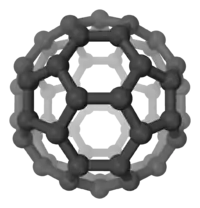Methoxyethane
Methoxyethane, also known as ethyl methyl ether, is a colorless gaseous ether with a medicine-like odor. It is extremely flammable, and its inhalation may cause asphyxiation or dizziness. As a Lewis base, it can react with Lewis acids to form salts and reacts violently with oxidizing agents.
 | |
 | |
 | |
| Names | |
|---|---|
| Preferred IUPAC name
Methoxyethane[1] | |
| Other names
ethyl methyl ether | |
| Identifiers | |
3D model (JSmol) |
|
| ChEBI | |
| ChemSpider | |
| ECHA InfoCard | 100.128.000 |
PubChem CID |
|
| UNII | |
CompTox Dashboard (EPA) |
|
| |
| |
| Properties | |
| C3H8O | |
| Molar mass | 60.096 g·mol−1 |
| Appearance | Colorless gas[2] |
| Density | 0.7251 g cm−3 (at 0 °C)[2] |
| Melting point | −113 °C (−171 °F; 160 K) |
| Boiling point | 7.4 °C (45.3 °F; 280.5 K) |
Refractive index (nD) |
1.3420 (at 4 °C)[2] |
| Viscosity | 0.224 cP at 25 °C |
| Hazards | |
| Main hazards | Extremely Flammable (F+), Liquefied gas |
| Safety data sheet | External MSDS |
| Related compounds | |
Related Ethers |
Dimethyl ether Diethyl ether Methoxypropane |
Except where otherwise noted, data are given for materials in their standard state (at 25 °C [77 °F], 100 kPa). | |
| Infobox references | |
References
- Nomenclature of Organic Chemistry : IUPAC Recommendations and Preferred Names 2013 (Blue Book). Cambridge: The Royal Society of Chemistry. 2014. p. 703. doi:10.1039/9781849733069-00648. ISBN 978-0-85404-182-4.
- Haynes, William M. (2010). Handbook of Chemistry and Physics (91 ed.). Boca Raton, Florida, USA: CRC Press. p. 3-248. ISBN 978-1-43982077-3.
This article is issued from Wikipedia. The text is licensed under Creative Commons - Attribution - Sharealike. Additional terms may apply for the media files.
